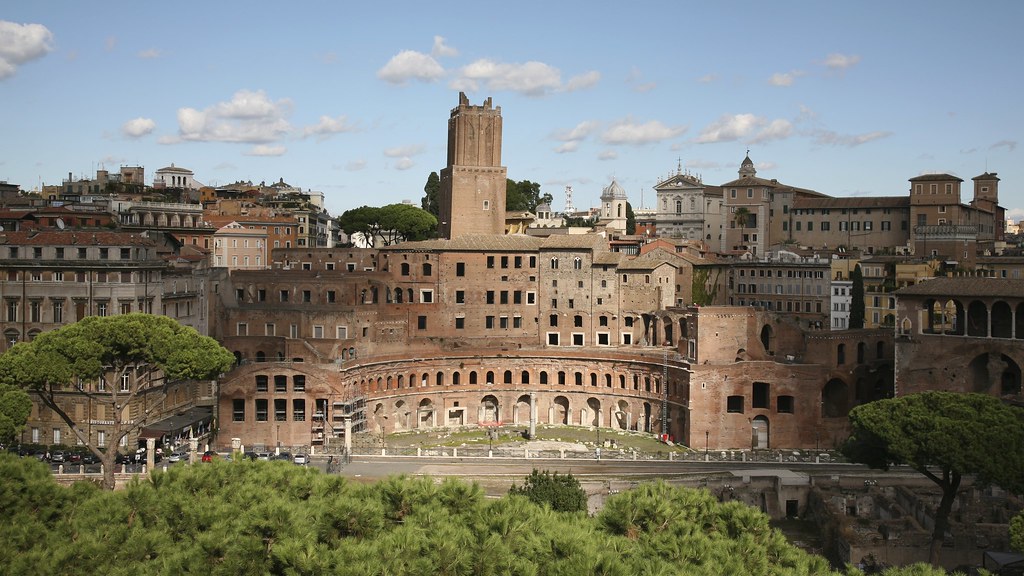Rome is the home of culture par excellence, the cradle of what is considered one of the most important civilizations of the ancient world.
In every corner of the Capital you can breathe history, of which monuments and museums are the maximum expression.
Staying at 47 Boutique Hotel, in the old town of the Eternal City, means having the opportunity to easily reach the most important places to visit in Rome and totally immerse yourself in the history of this wonderful city.
Forum Boarium
The Forum Boarium (200 mt) was the area of ancient Rome destined for the livestock market, which extended along the left bank of the Tiber, among the Aventine, Capitoline and Palatine hills. Inside the Forum Boarium we now find two temples, both dating back to the Republican era: one with a rectangular plan dedicated to Portunus, god of ports and gates; the other one with a circular plan dedicated to Hercules the Victor, protector of trade and transhumance of flocks.
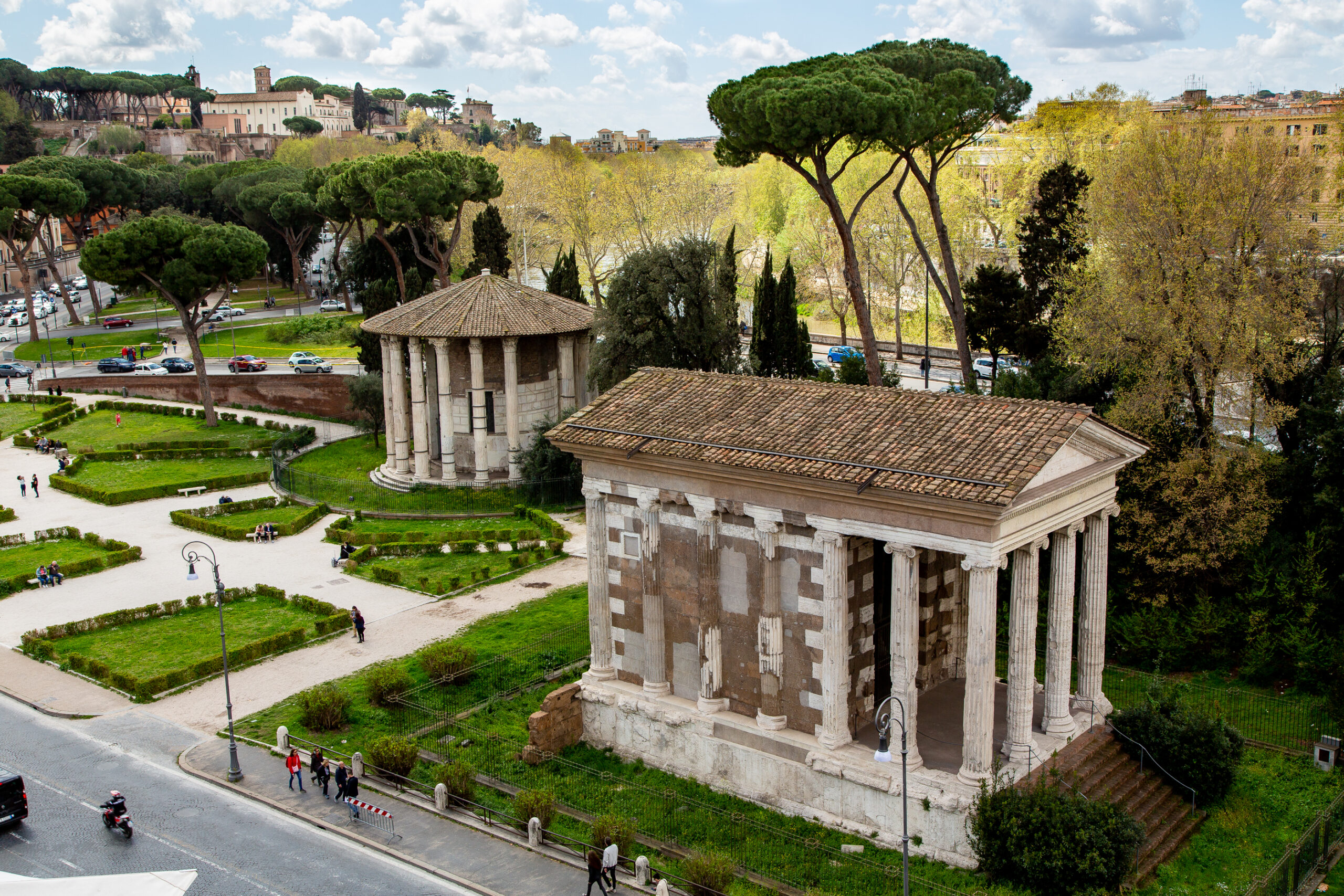
Mouth of Truth
Next to this ancient area, there is Piazza della Bocca della Verità, where we find the Basilica of Santa Maria in Cosmedin (200 mt) whose portico houses the famous Mouth of Truth of Rome. This marble mask was nothing more than a manhole, which in ancient Rome often depicted the faces of river gods swallowing water. The story of the Mouth of Truth is surrounded by a very famous legend: it was said to bite the hand of those who tell lies! Movies help increase the notoriety of the monument: how can we forget the scene of Audrey Hepburn from the film “Roman Holiday” shot right in front of the Mouth of Truth?
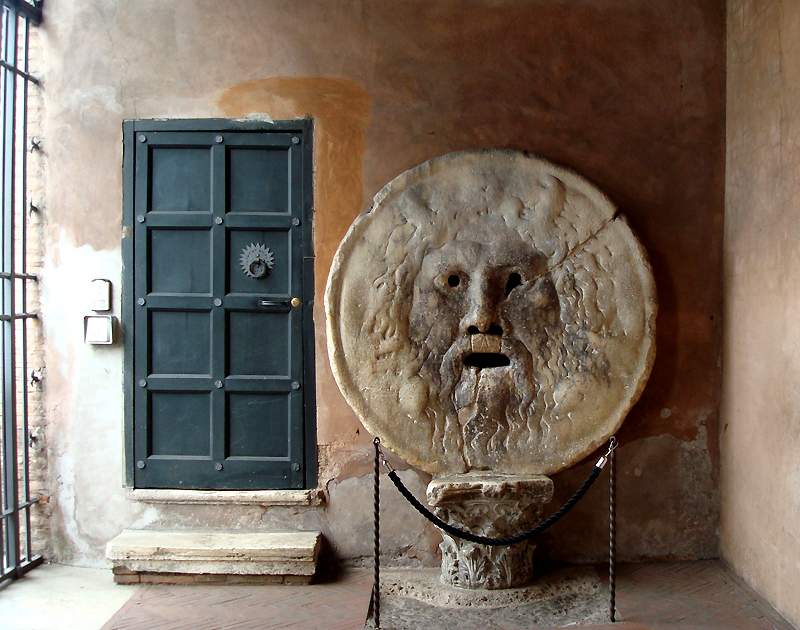
From Isola Tiberina
The Island Tiberina (400 mt) is one of the most evocative places of the Eternal City. It owes its name to Tiber river, the river that flows through Rome. It is the only urban island in the city and it is connected to the mainland by Cestius bridge and Fabrician bridge. Considered since ancient times a place dedicated to medicine, the Tiber Island of Rome once housed the temple of Aesculapius, the Greek god of medicine and healing.
Today, it is the seat of the Fatebenefratelli Hospital (whose foundation dates back to 1585) and the Israelite Hospital, which is located next to the Basilica of San Bartolomeo.
During the summer season, the Tiber Island of Rome is transformed into an open-air cinema, with film screenings, meetings with Italian and international directors and film reviews.
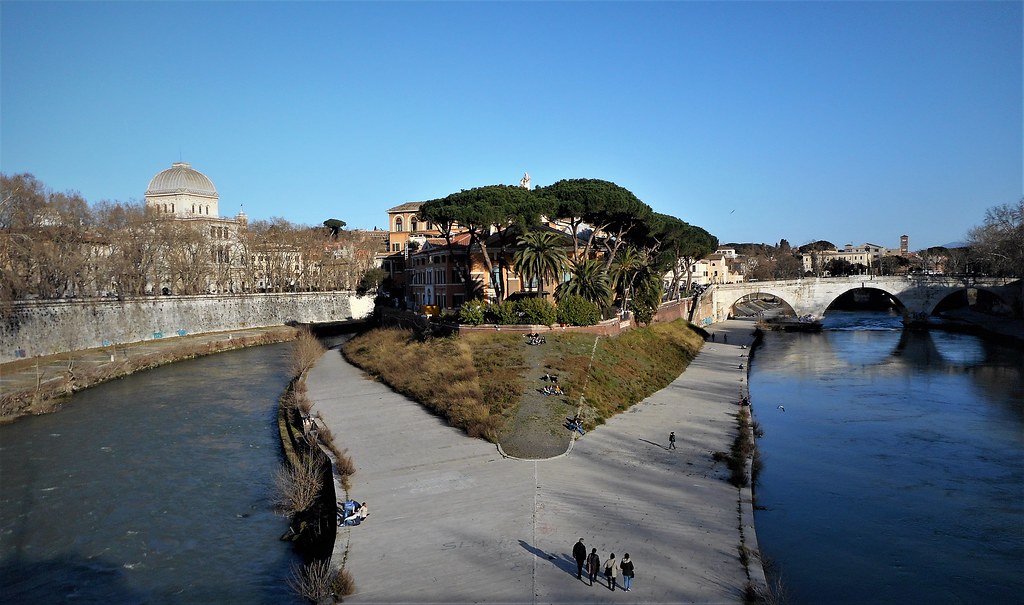
Theater of Marcellus
The Theatre of Marcellus (400 mt) is the oldest building for performances in ancient Rome, whose architecture is visible still today. The construction works were started by Julius Caesar and finished in the 11th century BC. by Augustus, who named it after his nephew and designated successor Marcus Claudius Marcellus. Built in the area of Campo Marzio, near the Temple of Apollo, during summer important concerts and events are held in the archaeological area of the Theater of Marcellus.
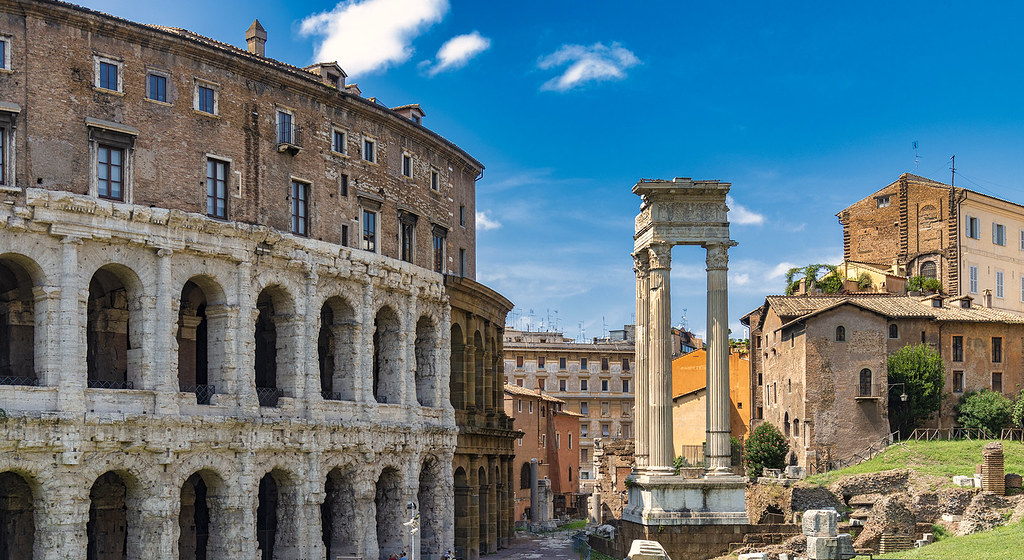
Circus Maximus
The Circus Maximus (400 mt) is considered the largest stadium built in the history of Ancient Rome. Its main function was to host the Roman Ludi in honor of the god Jupiter. Over the years, it housed competitions particularly loved by the Roman people, like horse races and fights between gladiators. Today Circus Maximus hosts many events including important concerts and some shows of the summer season by Teatro dell’Opera di Roma. Don’t miss the Circo Maximo Experience, where the augmented and virtual reality gives a faithful reconstruction of the Circus Maximus in all its historical phases, from its origins to the modern age.
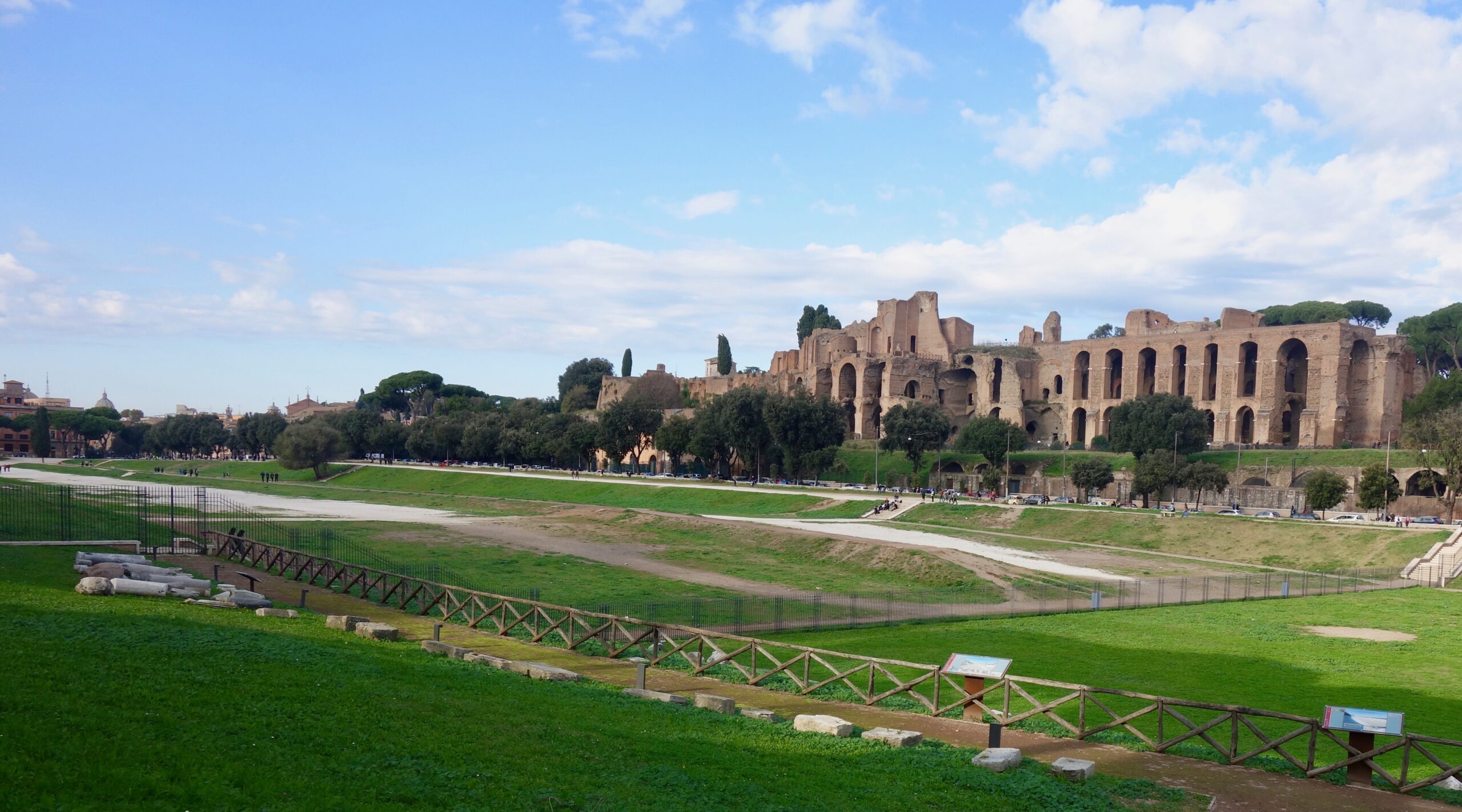
Municipal rose garden of Rome
A few meters from here, the spectacular extends Municipal rose garden of Rome (750 m). 1100 species of roses from all over the world that can be admired from May to October. Continuing, we find one of the most evocative places in the capital: the Orange Garden (850 m) of Rome on the Aventine. The main street of the park leads to the viewpoint which offers a breathtaking view of the Eternal City: the Tiber, the temples of the Forum Boarium, the Janiculum and the Tiber Island. Once the vegetable garden of the Dominican friars, the bitter oranges from the trees are said to have miraculous properties. But be careful: it is strictly forbidden to collect them! Entrance to the Orange Garden is free and opening hours vary depending on the time of year.
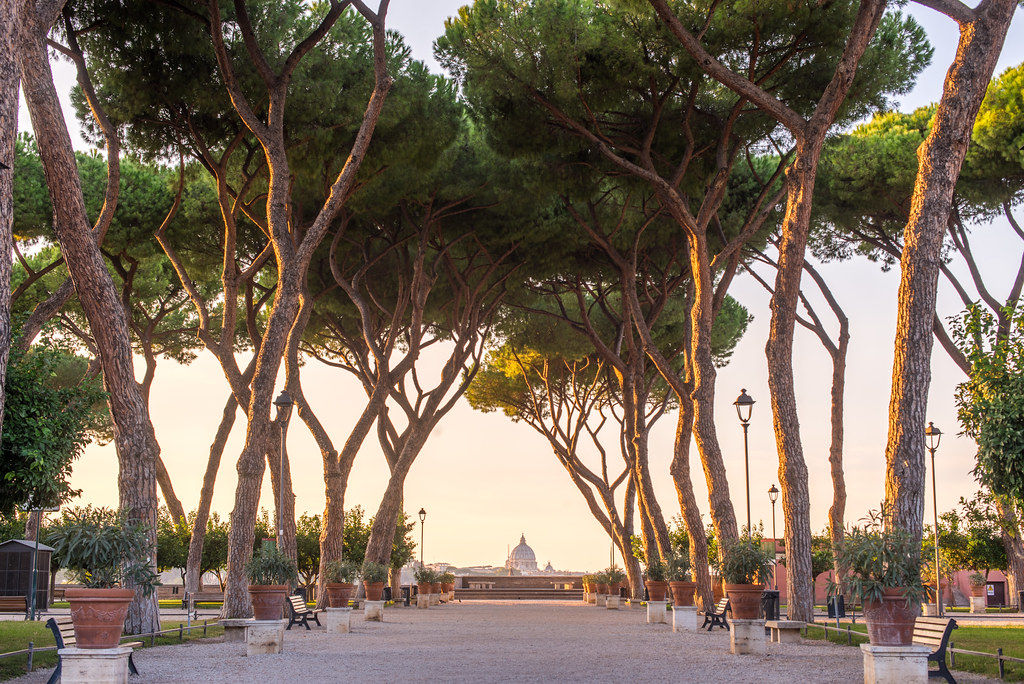
keyhole
On the highest part of the Aventine Hill there is the famous Keyhole (900 mt) located on the entrance door of Villa of the Priory of the Knights of Malta in Rome: looking through the keyhole, it is possible to admire the Dome of St. Peter’s Basilica, surrounded by the hedges of the building’s garden. A truly unmissable view of Rome!
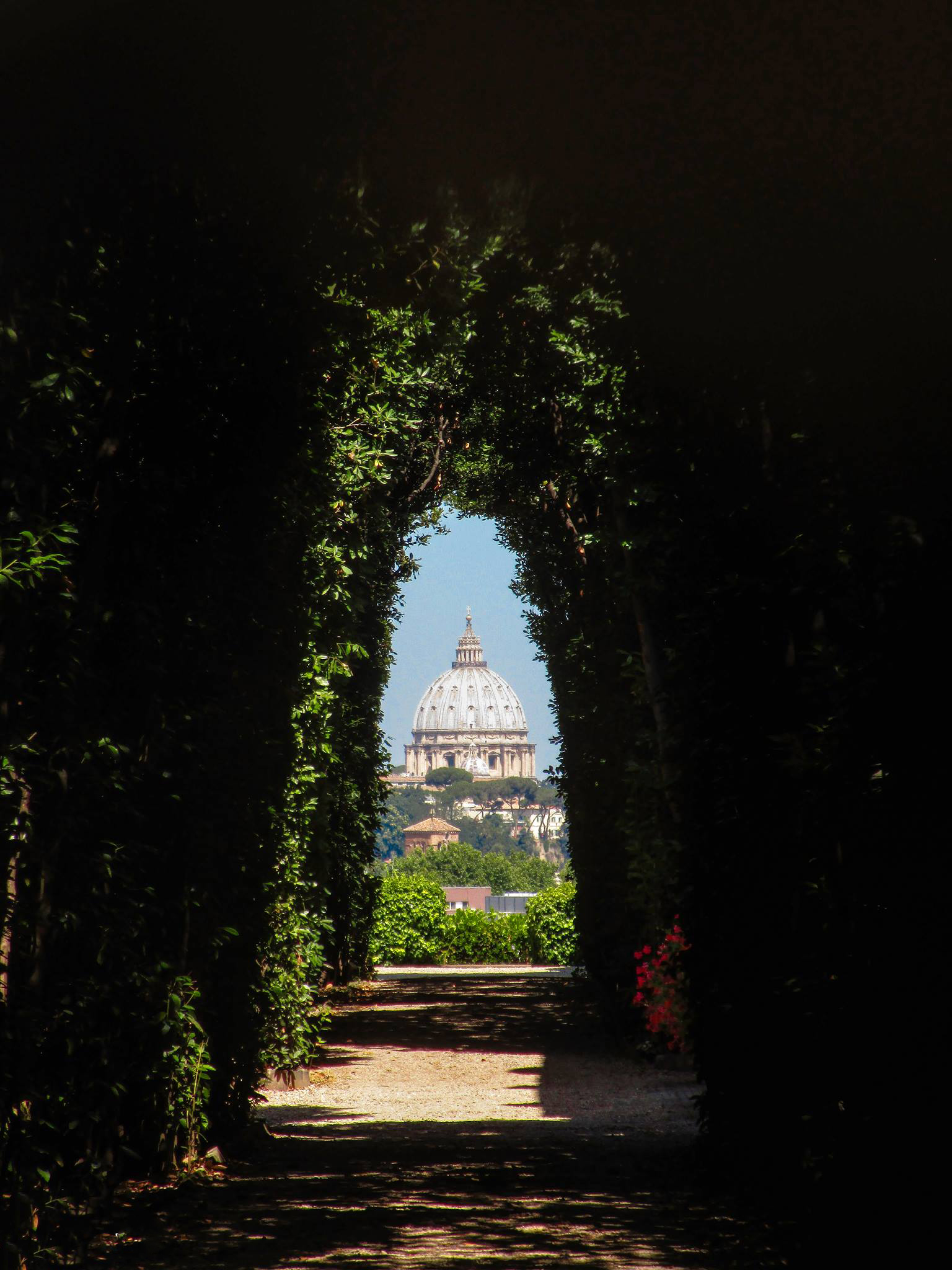
Colosseum
The Colosseum (Colosseo in Italian) or Flavian Amphitheater (1.2 km) is one of the most important places to visit in Rome. Commissioned by Emperor Vespasian between 70 and 72 AD, it was inaugurated by his son Titus in 80 AD. It is the largest amphitheater in the world and could accommodate up to 50,000 spectators, who attended games and shows particularly loved by the Romans: gladiator games and animal fights. Throughout its history, the Colosseum had undergone periods of decay, as well as numerous looting of marble and natural disasters. The Roman arena is one of the most visited monuments of the world: every year, many tourists include the Colosseum in their tours of Rome. It is possible to go inside the Colosseum, where there are events that give the chance to relive its history during the most glorious years of the Roman Empire.
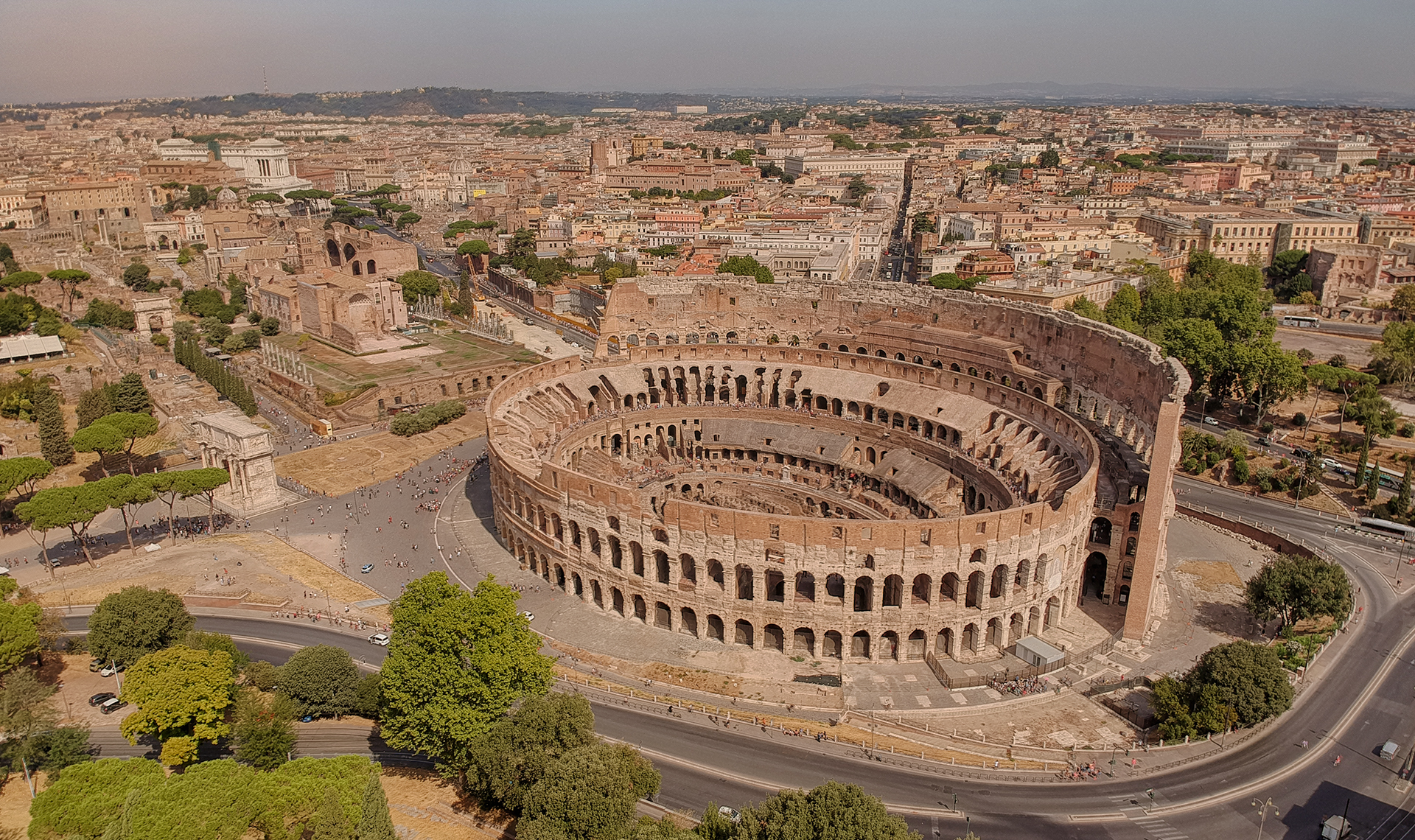
Roman Forum
Colosseum, Roman Forum and Palatine Hill belong to Parco Archeologico del Colosseo (1.7 km), where it is possible to visit the Colosseum and the Roman Forum with a single ticket. Born as a marshy area, the valley of the Forum of Rome, located between Piazza Venezia and the Flavian Amphitheater, was only reclaimed at the end of the 7th century BC, becoming the center of public life of the Roman Empire. Today, around the plaza, it is possible to admire the ruins of many important Roman public buildings, like the Temple of Vespasian and Titus, the Basilica of Maxentius and the Temple of Romulus. Important events were held here, like public speeches and gladiator matches. The opening hours of the Roman Forum are Monday-Friday from 10:30AM to 5:30PM.
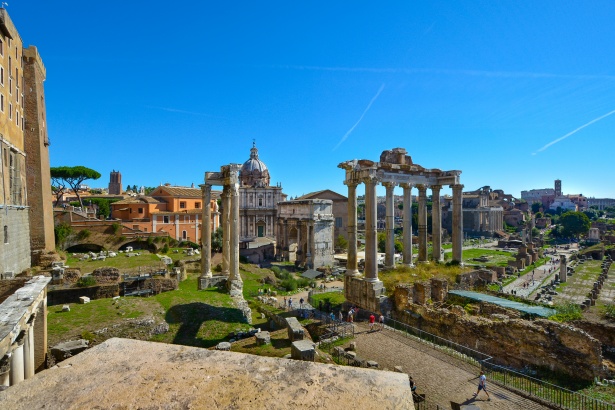
Trajan’s Markets
Along Via dei Fori Imperiali, we find the Trajan’s Markets (1 km), an architectural complex dating back to the 2nd century AD. Thought to be the oldest Rome’s shopping center in the world, this Roman market was built for public and commercial functions in ancient Rome. Since 2007, the Trajan’s Markets belong to the Museum of the Imperial Fora, which houses precious artifacts from many Roman forums and important exhibitions dedicated to the history of the city.
